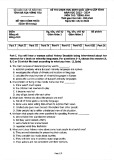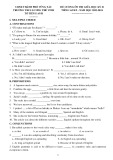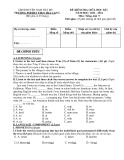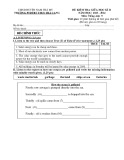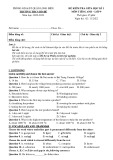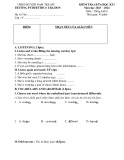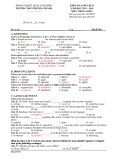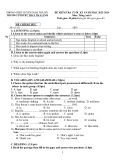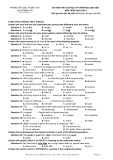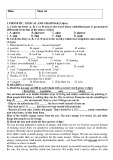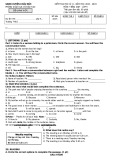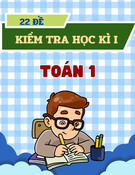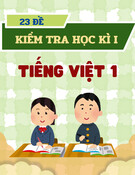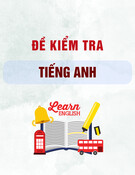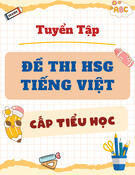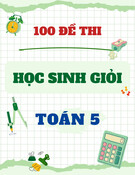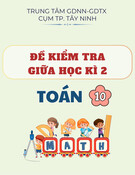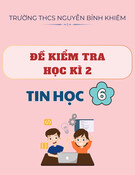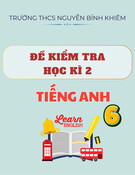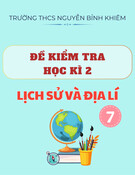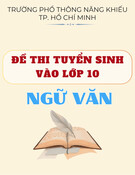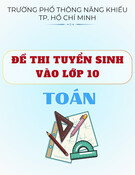The word jeans comes from a kind of material that was(1)....................... in Europe. The material, called jean was
named (2).................... sailors from Genoa in Italy, because they wore clothes made from it. In the 18th century jean
cloth was made (3)........................... from cotton and workers at that time loved wearing it because the material was
very strong and did not (4)........................easily. In the 1960s, many university and college students
(5)..........................jeans. Designers made different styles of jeans to match the 1960s’ fashions:
(6)....................................jeans, painted jeans and so on.
1.A. made B.be made C. making D. make
2. A. before B. after C. with D. by
3. A. complete B. completed C.to complete D. completely
4. A. wear on B. wearing out C. wear out D. towear out
5. A. wear B. wore C. wearing D. to wear
6. A. embroidering B. embroider C. to be embroidered D. embroidered
Part 2. Read the passage and answer the following questions: ( 1,0 point)
Brazil, the largest country in South America and the fifth largest country in the world, is located in the Eastern
half of South America. The people of Brazil are famous for their outgoing, friendly, and fun- loving nature.
Brazilian women are considered to be among the best dressed in the world.
Brazil is a federal republic with 23 states. The capital city is Brasilia. Portuguese is the official language and it is
spoken with a distinct Brazilian accent. Brazil has a population of over one hundred and thirty-eight million, which
is made up of people of many different races and ethnic groups.
1. Where is Brazil located? .................................................................................................
2. What are the people of Brazil like?.................................................................................................
3.What is Brazil's official language? ................................................................................................
4. Are there many different races and ethnic groups in Brazil?........................................................
IV. WRITING : ( 2.5 points)
Part 1:Rewrite the sentences without changing their original meanings(1,5 points)
1. It is a pity. I don’t know your name. ->I wish……………………………………………………
2. They often went to Vung Tau at weekends. ->They used…………………………………………………
3. You must do this work right away. -> This work ……………………………………………….
Part 2: Make complete sentences using the cue words (1.0 point)
1. We/ be/ really impress/ beauty/ Hue city.
....................................................................................................
2. lan/ wish/ can/ have/ new bike.
....................................................................................................
KEYS:
I . LISTENING : (2,5 points).
1. Listen and check (1 point) . (0,25 x 4= 1pt)
1.T
2.T
3.F
4.F
2. Listen and fill the words you hear to complete the texts (1,5 points). (0,25pt x6)
1 2 3 4 5 6
traditional poetry designers visited sympols dress
II. LANGUAGE FOCUS ( 2.5 points)
Part 1. Give the correct form of the vrbs in brackets ( 1.0 point)
1. went 2. has bought 3. has just been introduced 4. to play
2. Choose the best answer : ( 1.5 points)
1.d 2.d3.a 4.b 5.a 6. c
III. READING: ( 2.5 points ) :
1. Choose the best answer to complete the passage below: ( 1.5point)(0,25pt x6)
1. A








